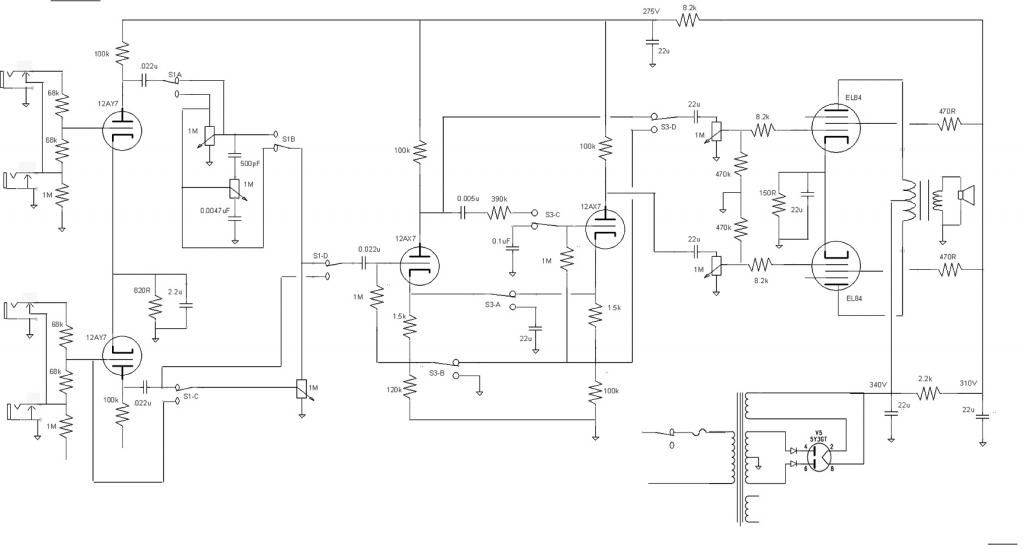The amplifier schematics that I've seen for a pair of EL84s in a PP configuration all have a long-tail pair PI. (Vox AC15, Marshall 18W and 2022 models)
From Merlin's preamp book I sussed that a cathodyne PI would generate plenty of signal for EL84s. Is this true? Can someone point me to a manufacturer or amp schematic that shows a cathodyne PI in this application?
From Merlin's preamp book I sussed that a cathodyne PI would generate plenty of signal for EL84s. Is this true? Can someone point me to a manufacturer or amp schematic that shows a cathodyne PI in this application?



Comment